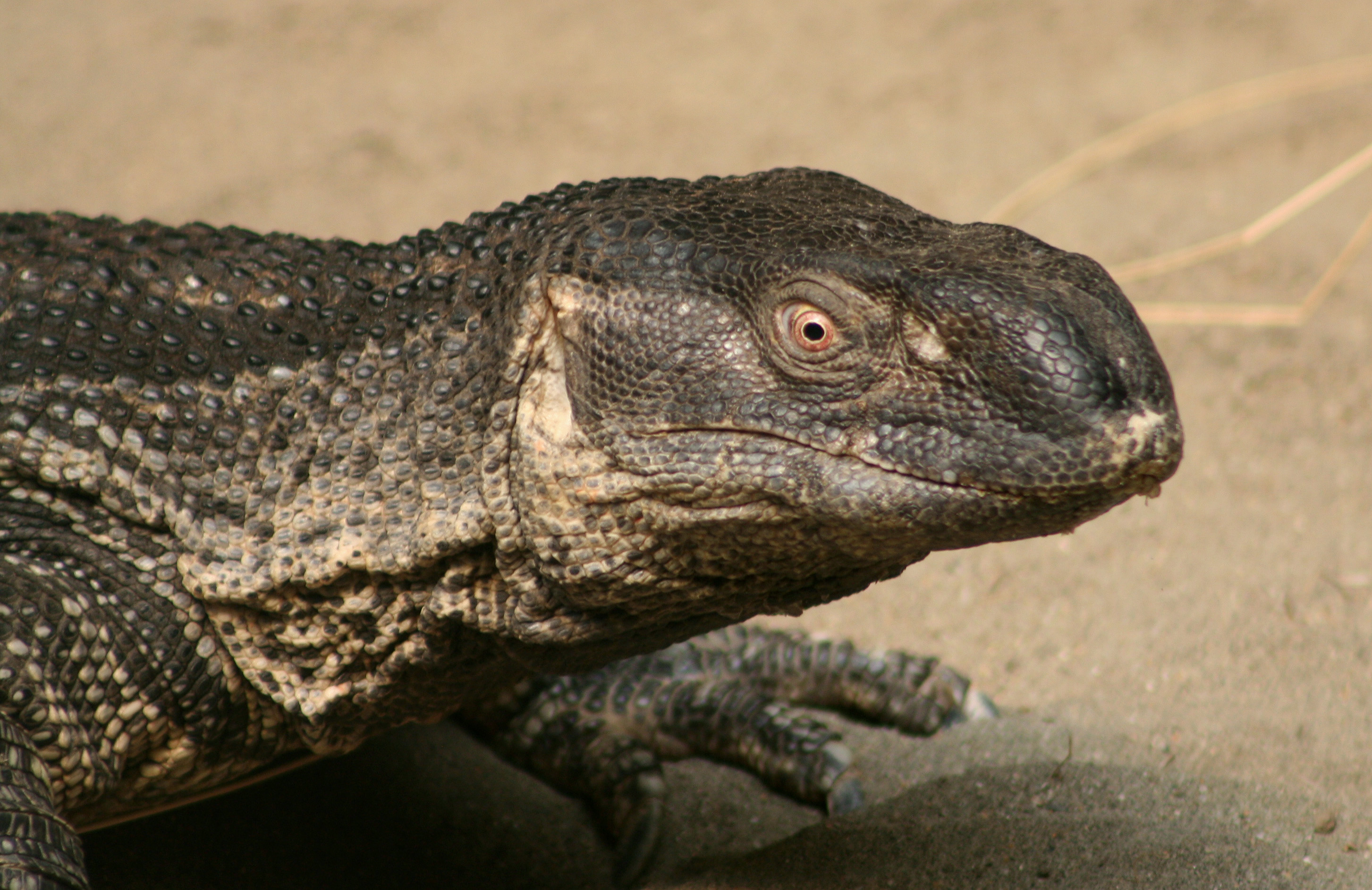
Taxonomy
First described by François Marie Daudin in 1802,[1] these lizards were previously classified as a subspecies of Varanus exanthematicus,[3] but have since been declared a distinct species based upon differences in hemipenal morphology.[4] The generic name Varanus is derived from the Arabic word waral ورل, which is translated to English as "monitor". Their specific name comes from a compound of two Latin words: albus meaning "white" and gula meaning "throat".
Description
The heaviest bodied and second longest lizard (the Nile monitor is longer) in Africa, they reach upwards of 2 metres (6 ft 7 in) in length, with the tail and body being of equal size. The head and neck are the same length, and are distinct from each other. Their bulbous, convex snouts give an angular, box-like appearance. Their forked tongues are pink or bluish,[6] and their scales are usually a mottled gray-brown with yellowish or white markings.
Intelligence
An intelligent lizard, several specimens have demonstrated the ability to count as high as six in an experiment conducted by Dr. John Philips at the San Diego Zoo in 1999. Philips offered varying numbers of snails, and the monitors were able to distinguish numbers whenever one was missing.

